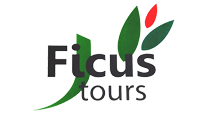Corcovado National Park, located on Costa Rica’s remote Osa Peninsula, is often described as the crown jewel of the country’s national park system. Covering over 164 square miles of lush rainforests, pristine beaches, and diverse ecosystems, Corcovado is home to some of the most incredible wildlife on Earth. For nature photographers, it offers a dreamlike backdrop teeming with opportunities to capture rare and exotic species in their natural habitat.
If you’re passionate about wildlife photography, Ficus Tours offers guided experiences that will take you deep into this biodiversity hotspot, where every moment presents the possibility of an unforgettable shot.
Why Corcovado is a Top Destination for Wildlife Photography
Corcovado is one of the most biologically intense places on the planet. The park’s combination of tropical rainforests, mangroves, and coastal habitats creates the perfect environment for an astonishing range of wildlife.
- Diverse Wildlife: The park is home to 140 species of mammals, 400 species of birds, 116 species of amphibians and reptiles, and more than 500 species of trees. It’s one of the only places in Costa Rica where all four species of native monkeys (howler, spider, white-faced capuchin, and squirrel monkey) can be spotted in the same area. You may also encounter tapirs, anteaters, peccaries, and, if you’re lucky, the elusive jaguar.
- Birdwatcher’s Haven: Corcovado is a birdwatcher’s paradise. From the vibrant scarlet macaw to the endangered harpy eagle, the park offers endless opportunities to capture colorful and rare birds in flight or perched against the dense green canopy.
- Marine Life: With Corcovado’s proximity to the Pacific Ocean, you’ll have the chance to photograph dolphins, sea turtles, and even humpback whales, especially during migration season. Tide pools and the surrounding coastal waters are teeming with life, making for stunning marine photography.
Best Times and Spots for Wildlife Photography
Timing plays a crucial role in wildlife photography, especially in a place as dynamic as Corcovado. Here’s what you need to know:
- Early Morning & Late Afternoon: These are the best times to photograph wildlife, as animals are most active during these cooler hours. The soft, natural lighting also helps capture the textures and colors of the rainforest without the harsh shadows of midday.
- Dry Season vs. Green Season: The dry season (December to April) offers more reliable weather and easier access to the park, while the green season (May to November) brings lush, vibrant vegetation and a higher chance of encountering baby animals. Each season provides its own unique photography opportunities.
- Top Photography Spots:
- Sirena Station: This area is the heart of Corcovado and offers some of the best chances to spot large mammals, birds, and even crocodiles near the rivers.
- San Pedrillo Station: Closer to the park’s coastline, this station is a great spot for photographing marine wildlife and lush jungle scenery.
- La Leona Station: Known for its mix of rainforest and beach, it’s ideal for capturing a variety of ecosystems in one location.
Essential Photography Tips for Corcovado
Photographing wildlife in a dense rainforest can present unique challenges. Here are some tips to ensure you get the best shots during your Corcovado adventure with Ficus Tours:
- Bring the Right Gear: A telephoto lens (300mm or longer) is essential for capturing distant wildlife, while a wide-angle lens can help showcase the stunning landscapes. Don’t forget extra batteries, memory cards, and protective gear for your camera, as the rainforest’s humidity can affect your equipment.
- Patience is Key: Wildlife photography requires time and patience. Spend time observing animal behavior, and be ready to react quickly when an opportunity presents itself.
- Know Your Subject: Familiarize yourself with the wildlife in the area before your trip. Knowing the habits and habitats of the animals you hope to photograph can help you anticipate where to look and when to capture the best shots.
- Respect Wildlife: Always remember to keep a respectful distance from the animals. Use your zoom lens to avoid disturbing their natural behaviors. Not only does this help you capture authentic moments, but it also protects the wildlife.
The Ficus Tours Experience
When you book a wildlife photography tour with Ficus Tours, you’re getting more than just a guided hike through the rainforest. Our experienced naturalist guides are experts in tracking wildlife and understanding animal behavior. They know the best spots and times to capture the animals you’re most excited to photograph, whether that’s a group of howler monkeys, a tapir taking a drink from a stream, or a colorful toucan.
We offer personalized itineraries based on your interests, so whether you’re a professional photographer or a hobbyist looking to improve your skills, we’ll make sure you have the opportunity to capture the images you’ve been dreaming of.
Conclusion
Wildlife photography in Corcovado National Park is an experience like no other. With its unparalleled biodiversity, stunning landscapes, and the guidance of knowledgeable experts from Ficus Tours, your trip to this remote rainforest paradise is sure to yield incredible shots that you’ll cherish for a lifetime.
Pack your camera, and get ready for an unforgettable adventure into the heart of the Costa Rican wilderness, where every click of the shutter could reveal something truly extraordinary.
